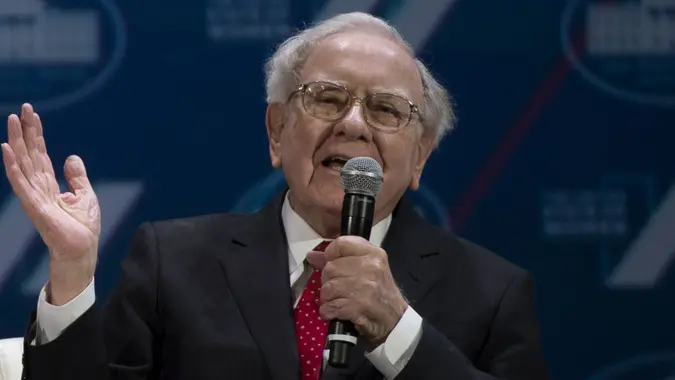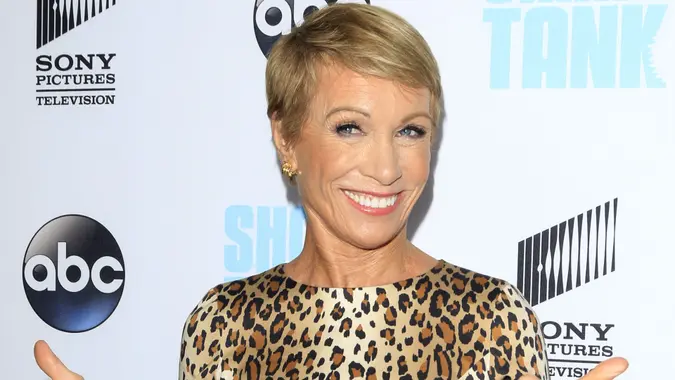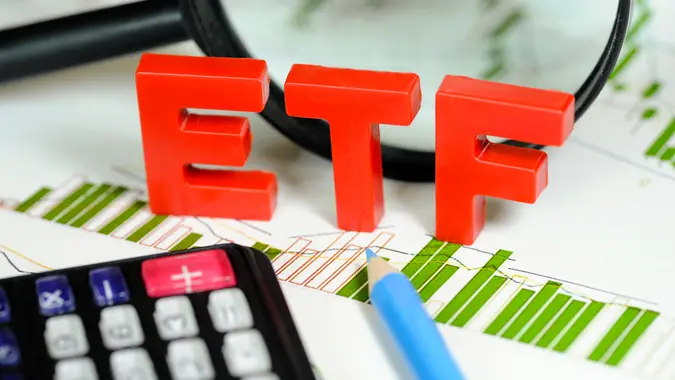Jaspreet Singh: Get Rich Through These 5 Assets

Commitment to Our Readers
GOBankingRates' editorial team is committed to bringing you unbiased reviews and information. We use data-driven methodologies to evaluate financial products and services - our reviews and ratings are not influenced by advertisers. You can read more about our editorial guidelines and our products and services review methodology.

20 Years
Helping You Live Richer

Reviewed
by Experts

Trusted by
Millions of Readers
Noted financial personality Jaspreet Singh recently spoke with Vishen Lakhiani, the founder of Mindvalley, about how to invest.
Specifically, the hosts talked about where Singh would recommend investors put $100,000 to get the greatest return over the next 10 years. While the insights Singh offered are very insightful, he emphasized what’s most important is that investors educate themselves about their opportunities.
As he described where he would put his money for the next 10 years, he stressed that each investor should pick and choose what to buy based on their own personal financial objectives and risk tolerance, which may or may not match his. With those caveats in place, here are the five asset classes where Singh has stashed his money.
Also see how much you should invest from every paycheck to retire wealthy, according to Singh.
His Own Business
Singh said he plows about 80% of his income right back into his business. This is because it has a theoretically unlimited potential return, he said.
Also, it allows you to scale your business up without having to worry about taking out loans or handing out equity to investors. If you have your own business, Singh recommends you take a similar course of action.
Of course, many Americans don’t have their own businesses, and those who do may not match the size and popularity of Singh. But for those in that situation, this is the financial personality’s No. 1 recommendation.
Real Estate
With the remaining 20% of his income, Singh turns to passive investments. Real estate is his first choice for that portion of his money.
Singh loves the fact that he can see, feel and touch a physical asset like real estate, something you can’t get from a paper asset like a stock. Of course, Singh also loves the cash flow that his rental properties generate. According to Singh, the bulk of his daily expenses are actually paid for by cash flow from his investments, not from his job.
Stocks
Of the 20% of his income that Singh doesn’t reinvest in his business, he estimates that about 50% goes to real estate but 30% goes to stocks. Singh considers himself both an active and a passive investor, so he owns both individual stocks that he has researched and exchange-traded funds that track the stock market.
One of the suggestions Singh makes to viewers is that they decide whether they want to be passive or active investors. Passive investors give money to others to manage for them in exchange for partial ownership, while active investors do all of the heavy lifting themselves and take on more risk in exchange for a higher potential return.
Cryptocurrency and Startups
Because Singh has cash flow paying for most of his expenses, he can afford to speculate a bit more than the average investor. To this end, he puts about 18% of his investable money into cryptocurrencies and startups. These types of investments offer the potential for big gains but also carry the risk that you could lose everything, so evaluate your risk tolerance before you invest.
Even Singh himself doesn’t necessarily endorse these types of investments for others; he just says they are a part of his portfolio.
Physical Gold
Singh puts the remaining 2% or so of his investable cash into gold, which he doesn’t really consider an “investment.” To Singh, gold is simply an alternative way to save money. It doesn’t “do anything” and is more of a “doomsday insurance,” with a sprinkle of inflation protection thrown in.
As Singh explains it, gold doesn’t provide cash flow; but, if he were to bury $10,000 in cash and $10,000 in gold into the ground today, in 10 years he feels the gold would have more purchasing power.
Bonus Tip on Diversification
Diversification is often touted as one of the keys to higher returns with lower risk, but if you’re an active investor — and you’re good at it — Singh says you should eschew diversification and instead concentrate on what you know.
In this sense, he echoes the “Oracle of Omaha ” himself, Warren Buffett, who famously said, “Diversification is a protection against ignorance. [It] makes very little sense for those who know what they’re doing.”
Of course, as Singh points out, there’s no shame in wanting to be a passive investor or in admitting that you’re not knowledgeable enough to actively pick stocks, for example. You can still make money with a diversified portfolio; and, if you’re not entirely comfortable with picking your own investments, this is the right path to choose.
The Bottom Line
At the end of the day, Singh doesn’t want any investor to mimic what he does. He just wants investors to educate themselves. As everyone has different investment objectives and risk tolerances, people should devise investment strategies that work best for them.
You may not be in need of the cash flow that Singh enjoys, for example, or you may not understand cryptocurrencies, startups or even stocks enough to pick and choose your own. That’s all OK. At the end of the day, Singh’s message is that you should know what your needs are and how much risk you can take, and then invest appropriately.
 Written by
Written by  Edited by
Edited by 

























